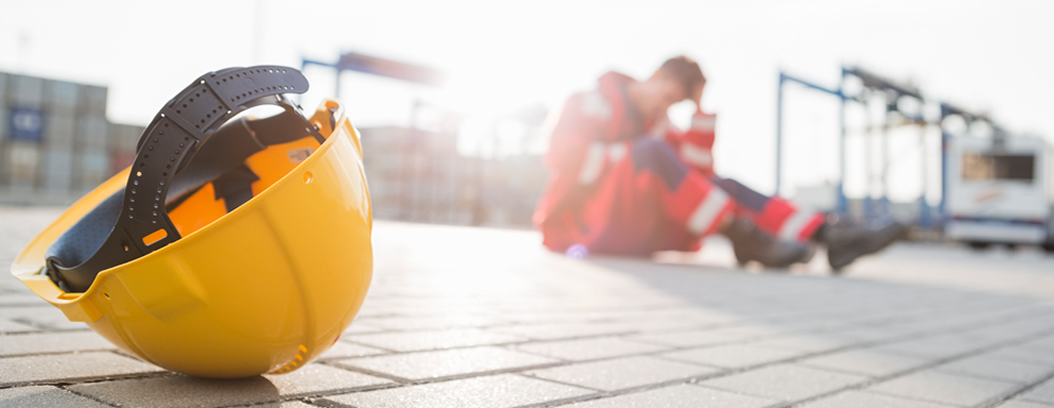Nassau County Construction & Workplace Accident Lawyer
When you are the victim of a work-related injury, your ability to provide for your family may be in jeopardy. As a result of this, your need for compensation is crucial.
Common Work-Place Injuries Include:
- Falls from scaffolding, ladders, roofs
- Broken bones from hazards
- Toxic chemical exposure
- Forklift, bulldozer and crane accidents
- Severe head injuries from falling objects
- Knee, shoulder, and joint injuries
- Malfunctioning power tool injuries
- Faulty rigging, cables or ropes
- Slip-and-falls
- Defective machinery accidents
- Electrocution accidents
- Welding burns
- Repetitive stress disorder
- Hearing and vision loss
- Heavy lifting injuries
- Construction site death
- Fires and explosions
Recovery Other Than Workers’ Compensation
When a worker at a construction site is injured, he/she is generally covered by workers’ compensation. Workers’ compensation benefits, however, may not be sufficient to cover the severe injuries. Furthermore, receiving workers’ compensation bars the recipient from suing his or her employer for the injury. However, if the injury was caused by a non-employer or “third party,” the injured victim may sue that third party. A third party, within the context of construction site injuries, may include a manufacturer of faulty machinery, a negligent worker, a non-employer contractor, or a non-employer subcontractor. Often, one of these third parties will be the cause of an injury to a non-employee who is working for someone else on the construction site.
Although workers’ compensation provides much needed assistance for injured employees, it is rarely enough to cover all the costs of serious injuries. Whether your injury occurred on a construction site, warehouse, factory floor or any other location, you may be entitled to bring a claim or lawsuit to recover additional and significant compensation for your pain and suffering. This compensation is in addition to any workers’ compensation benefits you receive. However, there are some important differences between workers’ comp and third-party personal injury cases:
- Workers’ compensation is a strict-liability system. You may recover benefits even if your employer didn’t do anything wrong. Personal injury cases, on the other hand, often require you to prove that someone was at fault.
- Workers’ compensation imposes statutory limitations on the types of damages available. Recovery is often much greater in a successful personal injury claim, especially if you are able to obtain punitive damages.
- Personal injury tort actions can be brought against any party that played a role in causing your accident.
Construction Site Accidents
The U.S. Occupational Safety and Health Administration (OSHA) as well as New York State law, makes employers responsible for certain aspects of workers’ safety. Workers who must use tools should be properly trained in their function, use and maintenance. They should know which tools are right for certain jobs. Workers should also be issued safety equipment like gloves, goggles and hardhats. Employers are responsible for ensuring that tools used at job sites function correctly. However, construction sites make for hazardous work environments and accidents do happen. And when construction accidents occur, they are often extremely serious.
Workers who are seriously injured in the work-place will face considerable hardships such as medical expenses, loss of work, and perhaps even therapy and rehabilitation costs. Similarly, employees may have ongoing expenses for assistive devices, such as wheelchairs or prosthetics. Lastly, there are psychological factors to consider, and the injured worker and/or family members may require counseling to deal with the profound changes in their life and lifestyle.
If you or a loved one have received serious construction-related injuries, speak to an experienced attorney to pursue a personal injury claim.
Scaffolding Accidents
Worksite regulations and construction industry regulations put in place by the Occupational Safety and Health Administration (OSHA) and by state agencies are meant to protect employees at worksites from serious injuries, including those caused by falls from high elevations such as ladders and scaffolding. Rules set performance-based criteria to protect employees from scaffold-related hazards such as falls, falling objects, structural instability, electrocution or overloading.
New York State has a special law designed to protect workers who are injured while on scaffolds to help them pay for medical bills, lost earnings, pain and suffering and other expenses. That law, Labor Law Section 240, requires owners of buildings and general contractors to provide proper safety protection for all on-site workers and favors the injured worker by placing much of the liability on those in charge of the construction site.
Although this law has been surrounded by controversy and many are fighting for its repeal, it affords its protections to workers on scaffolds and elevated heights nonetheless.
If you do any work, from window-washing to construction work, at an elevated height, the property owner and general contractor at your work site are responsible for providing adequate scaffolding, ladders and safety devices. Consequentially, if you have been injured in a fall from a scaffold, ladder, work platform or other high location, you may be able to pursue a personal injury claim against the property owner and general contractor in addition to any workers’ compensation benefits you may be entitled to receive.
Contact a Construction and Workplace Accident Lawyer
If you or a loved one has been injured in a workplace or construction accident, contact Evan Gewirtz at the Gewirtz Law Firm by calling or filling out our contact form.




